Canis Minor constellation depicts man’s best friend. We can form a pattern forming a dog inside it. The thing is, there is another constellation in the sky forming a larger dog. It is called the Canis Major. Most of the time, people confuse them with one another. So what is the difference?
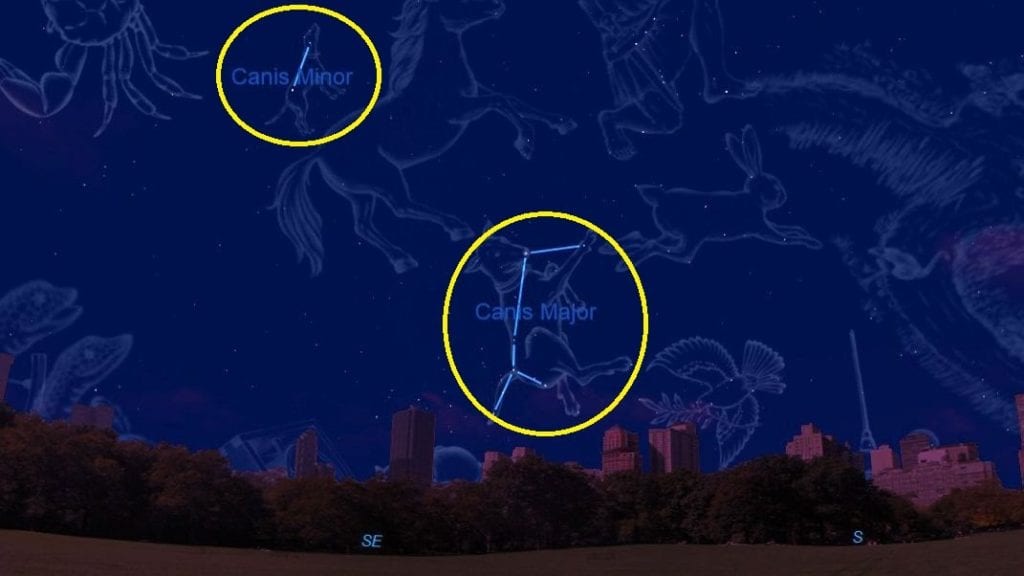
Canis Minor vs Canis Major
In the animal kingdom, the word “canis” is associated with dogs, wolves, coyotes, and jackals.
The major difference between Canis Major and Canis Minor is their size. Their names tell us something about it. The word “canis” means “dog” in Latin. And so, Canis Minor is the “Lesser Dog” while Canis Major is the “Greater Dog.”
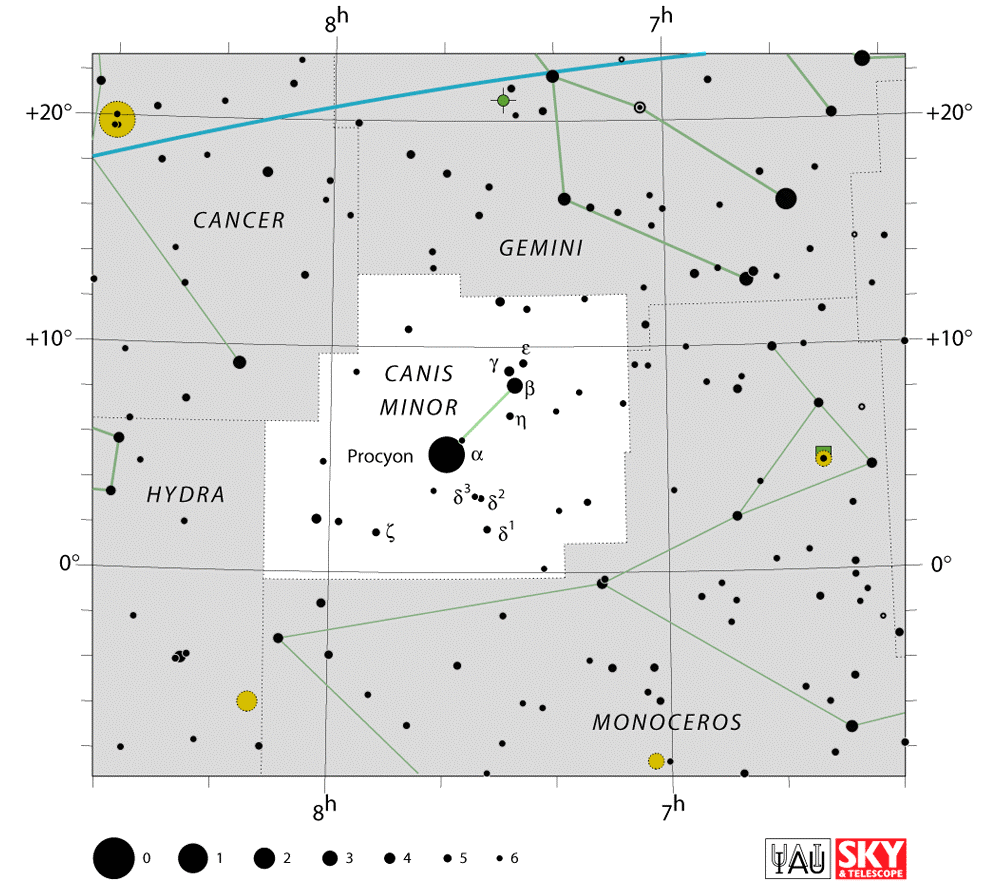
Canis Minor
Canis Minor is a small constellation. It is also called the “Little Dog” or the “Small Dog.” It occupies an area of 183 square degrees. If we are going to rank all of the 88 constellations from largest to smallest, it would be in 71st place.
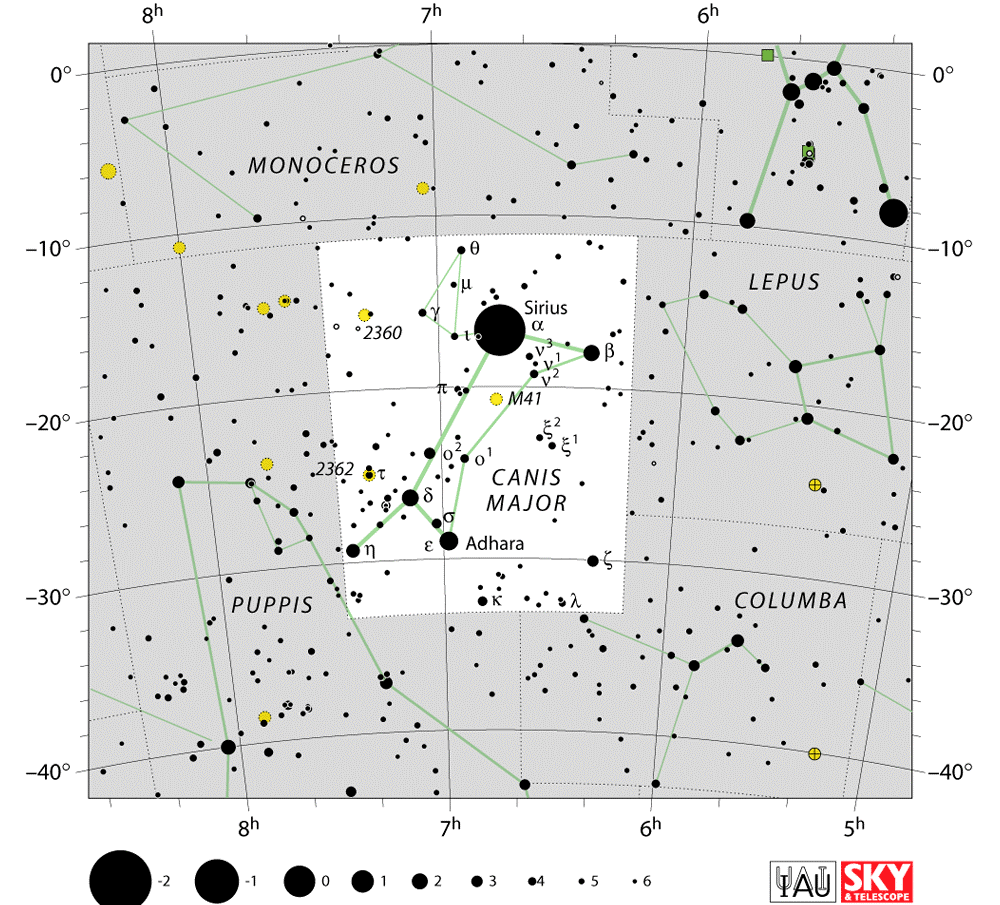
Canis Major
Canis Major is a relatively big constellation. It has an area occupying 380 square degrees. Because of that, it is the 43rd largest constellation that we can see in the night sky.
In Focus: Canis Minor aka The Lesser Dog
Canis Minor was one of the first 48 constellations mentioned in the 2nd-century account called Almagest by Ptolemy. Now, it is one of the 88 modern constellations recognized by the International Astronomical Union (IAU). The abbreviation for this constellation is written as CMi. The genitive name of Canis Minor is Canis Minoris which is used in the names of its stars.
The Lesser Dog may be a little challenging to identify at first because it is made up of only two bright stars. It simply looks like this:
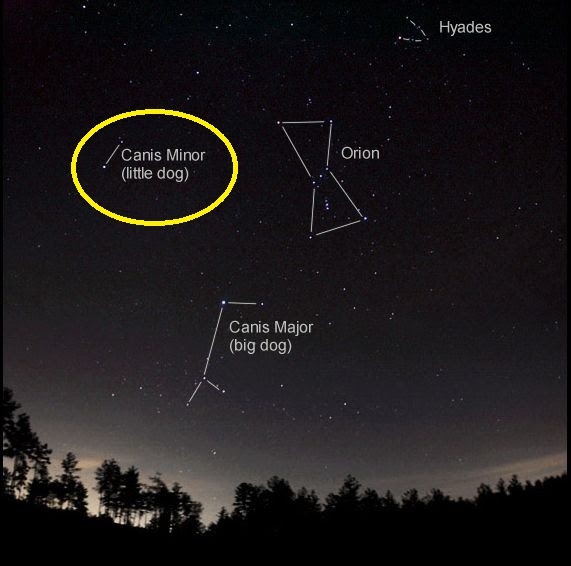
What’s In a Name?
Today, we know the Lesser Dog as the Canis Minor Constellation. But before that, it had different titles from different areas of the world. The brightest stars in this constellation, Procyon and Gomeisa, were also mentioned a lot.
Babylonian Names
In Babylonia, Canis Minor was called DAR.LUGAL. The name has many varieties like DAR.MUŠEN and DAR.LUGAL.MUŠEN. It is also called by a different name in another Mesopotamian empire. In Akkadian astronomy, it is called tarlugallu.
The stars Procyon and Gomeisa also had different names back then. They were called MASH.TAB.BA. It means “twins.” These early names were found on the tablets called Three Stars Each.
Greek Names
Ancient Greeks called Canis Minor as Procyon. Procyon is made up of two Greek words:
Pro- meaning “before” and kuon which means “dog.”
It also had other titles such as Sukaminos (sycaminos) and Morus, relating it to the sycamore tree.
Latin Names
Cicero translated the ancient Greek name of the Lesser Dog into Antecanis or Praecanis. It has the same meaning as its Greek origin which said something about “The Dog in Front,” and “The Preceding Dog.” They called it that because it rises about an hour earlier than the Greater Dog, or specifically its main star Sirius. Sirius is also called the Dog Star.
Arab Name
Canis Minor was called by Arab astronomers in the past Al Jummaiza. It means sycamine/sycamore tree.
Learning about the names of a constellation in the past will help us understand it better today. Nowadays, we call the constellation Canis Minor. Its alpha star is Procyon and its beta star is Gomeisa.
It is interesting to know that Canis Minor Constellation was called by the names of its two brightest stars!
Where and When to See Canis Minor Constellation
We can see Canis Minor in the northern sky at about 8 hours right ascension and 5° north declination. It is in the second quadrant of the northern hemisphere (NQ2) between latitudes +90° and -75°.
The Lesser Dog of the celestial sky is a winter constellation. Can you spot it in the picture below?
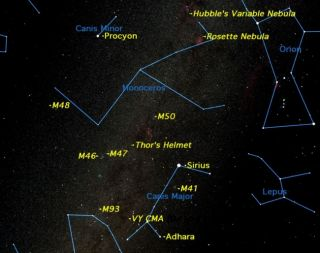
We have about three months to see it in the night sky because it is visible from December up to March in the northern hemisphere. We can see it best at 9 pm in March. In the southern hemisphere, people can see them from June to September.
Canis Minor in the Banks of the Milky Way
Our solar system belongs in the galaxy of the Milky Way. It is a spiral galaxy. Our planet, Earth, is located in one of its spiral arms. There are many other celestial objects along the Milky Way. It passes through many constellations including the Canis Minor.
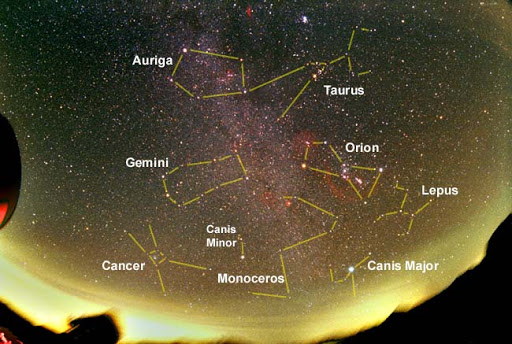
The Milky Way is also known as the Great Celestial River. It passes through other constellations such as Auriga, Gemini, Monoceros, and Orion. Notice that Canis Minor and Canis Major are on different sides of the Celestial River. It has become the basis of some myths in the past.
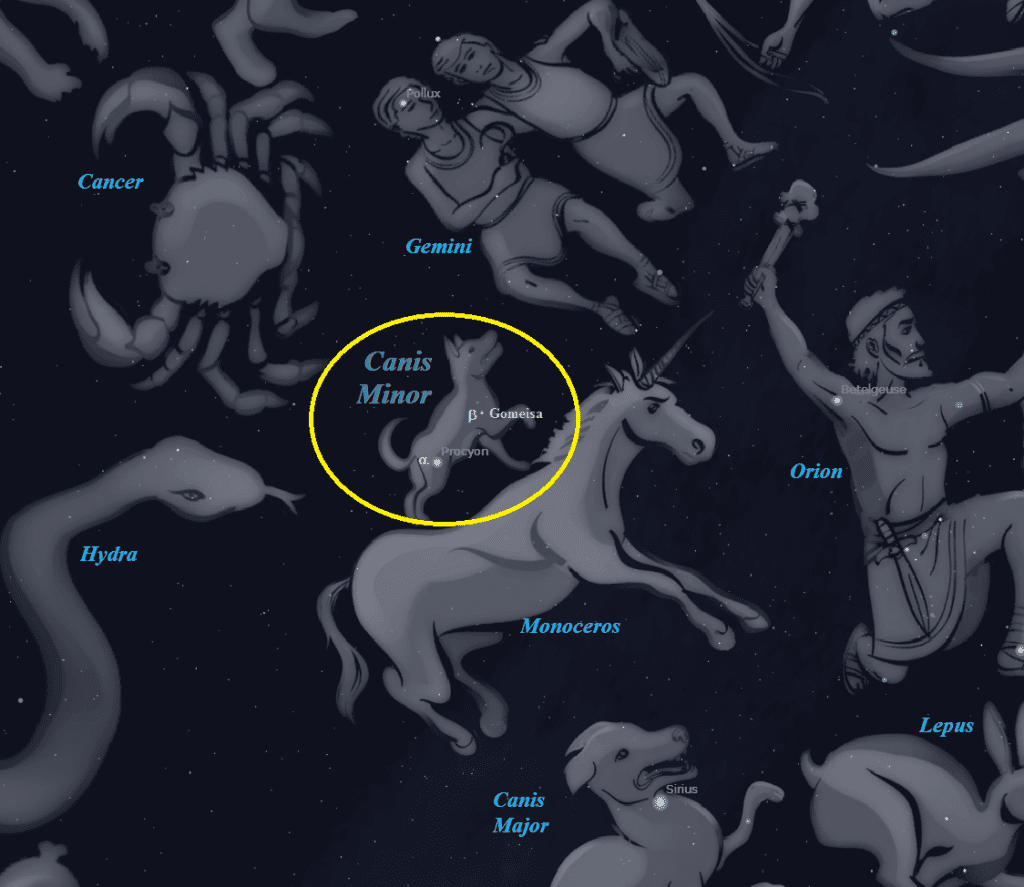
Canis Minor and Its Neighbors
Canis Minor is never alone in the night sky. It is bordered by many other constellations. Because of this, identifying this little constellation becomes easier.
Gemini is in its north while Monoceros the unicorn is in its south. Cancer lies on its northeast side and Hydra on the east. As we can see, the Lesser Dog looks very playful on the back of the celestial unicorn!
Other constellations nearby are the Canis Major (the Greater Dog), Orion (the Hunter), and Lepus (the Hare) which are mentioned in the mythology of Canis Minor. Together, they form the Orion Family of Constellations.
Constellation Families: Where Canis Minor Belongs
Constellations in the night sky are grouped based on their similarities. It can be because of a common location, whether they are near each other in the sky. It could be because they were discovered at around the same time. They can also be grouped based on their myths. They were grouped by Donald H. Menzel, who was a director of the Harvard Observatory. His account titled A Field Guide to the Stars and Planets was published in 1975.
There are eight groups of constellation families. Canis Minor belongs to the Orion family.
Asterisms Related to Canis Minor Constellation
Aside from the pattern of the Lesser Dog, there are other forms we can see in the night related to Canis Minor and its stars.
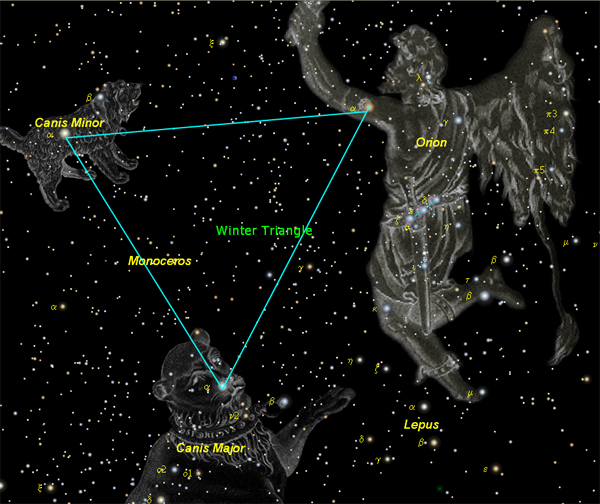
Winter Triangle
The Winter Triangle is also called the Great Southern Triangle. It is not a constellation, but an asterism. We can form it by connecting the three brightest stars from different winter constellations namely Orion (the Hunter), Canis Major (the Greater Dog), and Canis Minor (the Lesser Dog).
The stars in the Winter Triangle are Betelgeuse from Orion, Procyon from Canis Minor, and Sirius from Canis Major constellation.
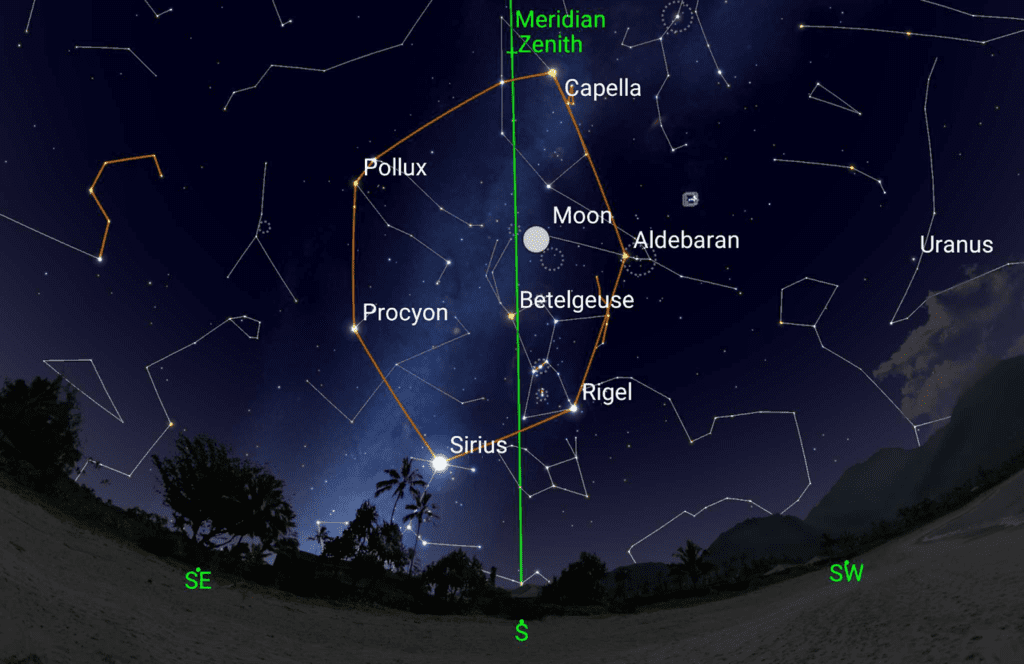
Winter Hexagon
The Winter Hexagon is also called the Winter Circle. We can see this asterism in the winter sky. Seven stars form this hexagon.
1. Rigel in Orion
2. Aldebaran in Taurus
3. Capella in Auriga
4. Castor and Pollux in Gemini
5. Procyon in Canis Minor
6. Sirius in Canis Major
Interestingly, two of these seven stars, Sirius and Procyon, are also part of the Winter Triangle.
Canis Minor and Its Stars
Canis Minor Constellation does not have many bright stars. In fact, only two of them are brighter than the fourth magnitude. These two are what we see in most illustrations of this constellation.
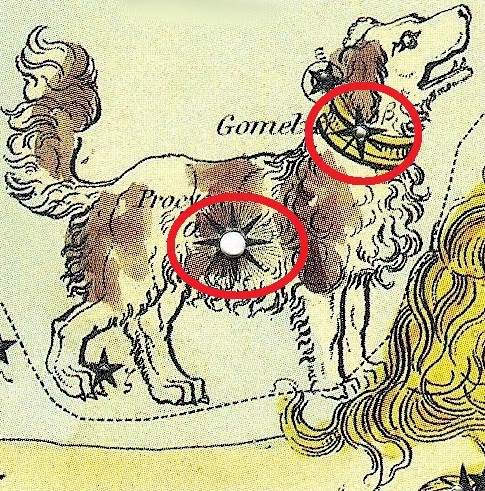
Here are some of its stars:
1. Procyon (α Canis Minoris)
Alpha Canis Minoris located in the Lesser Dog’s belly. It is also the brightest star in this constellation. It is a binary star system composed of Procyon A (white-hued star) and Procyon B (faint white dwarf). These two orbit one another in a period of 40.8 years. Procyon is the eighth brightest star that we can see in the night sky. It has an apparent magnitude of 0.34. It is about 11.46 light-years from Earth, making it one of our nearest stellar neighbours.
2. Gomeisa (β Canis Minoris)
Beta Canis Minoris marks the Little Dog’s neck. It has a magnitude of 2.89, making it the second brightest star in this constellation. It is a blue-white main-sequence star. Although it looks fainter as we see it on Earth, it is actually brighter than Procyon and 250 times as luminous as our Sun. It looks less bright to us here because it is a distant star, about 170 light-years away from us.
3. Gamma Canis Minoris (γ Canis Minoris)
Gamma Canis Minoris is a double star. It is an orange K-type giant of spectral class K3-III. The apparent magnitude of this star is 4.34 and is 318 light-years away from us.
4. Delta Canis Minoris (δ Canis Minoris)
Three stars share the name Delta Canis Minoris in the Bayer designation. These stars form the paws of the left hind leg of the celestial Lesser Dog.
The three stars are:
- Delta1 Canis Minoris (δ¹ Canis Minoris)
A yellow-white hued star in Canis Minor having an apparent visual magnitude of +5.25. It is about 760 light-years from the Sun.
- Delta2 Canis Minoris (δ² Canis Minoris)
An F-type main-sequence star with a magnitude of 5.59. It is 136 light-years distant. It is also known as 8 Canis Minoris.
- Delta3 Canis Minoris (δ³ Canis Minoris)
A white main sequence star of magnitude 5.83. It is 680 light-years (210 parsecs) distant. Another name for it is 9 Canis Minoris.
5. Epsilon Canis Minoris (ε Canis Minoris)
Epsilon Canis Minoris is a suspected binary star system. This star is in the fifth magnitude, so there is a chance that we can see it through the naked eye. But if we do, it will be faint. It is 770 light-years from the Sun.
6. Zeta Canis Minoris (ζ Canis Minoris)
Zeta Canis Minoris is a solitary giant star with a blue-white hue. We can see it in the naked eye but it will be faint. Its apparent visual magnitude is 5.13. It is 420 light-years from the Sun. Zeta Canis Minoris marks the paw of the right hind leg of the Lesser Dog.
7. Eta Canis Minoris (η Canis Minoris)
Eta Canis Minoris is a binary star about 318 light-years from Earth. Its components are η Canis Minoris A (a yellow-white F-type giant) and η Canis Minoris B. The primary component has an apparent magnitude of +5.24 while the secondary component is an eleventh-magnitude star.
8. Luyten’s Star (GJ 273)
Luyten’s Star is a red dwarf star that is about 12.36 light-years from the Sun, making it one of the nearest star systems to our planet. This faint star has a visual magnitude of 9.9. Four planets were confirmed in this star. The amazing thing is that one of those planets is habitable! Let’s learn a little more about it.
- Luyten b is an exoplanet orbiting Luyten’s Star. It is also known as Gliese 273b. This is one of the few planets that are very much like our planet, Earth. Also, with a distance of 12.2 light-years, it is the fifth-closest potentially habitable exoplanet known. The other four close ones before it are Proxima Centauri b, Barnard’s Star b, Ross 128 b, and Gliese 1061 d.
Deep Sky Objects in Canis Minor Constellation
Canis Minor is a small constellation, but small does not mean boring. Though it does not have any Messier object, it houses different galaxies and other deep sky objects aside from its stars.
NGC 2459
NGC 2459 is an open cluster in the constellation of the Small Dog. An open cluster is a group of hundreds to a few thousand stars. The same molecular cloud formed these stars, so they are about the same age. NGC 2459 was discovered by Wilhelm Herschel on December 26, 1785.
NGC 2394
The NGC 2394 object, is an open cluster located in Canis Minor. Just like NGC 2459, it was discovered by Herschel in 1785. The NGC 2394 cluster has about 140 stars. It is believed to be about 1.1 billion years old.
NGC 2508
NGC 2508 is a lenticular galaxy. This kind of galaxy looks like a disc. This galaxy is roughly 190 million light-years from our galaxy, the Milky Way.
NGC 2402
NGC 2402 is a pair of galaxies. These two galaxies are PGC 21176 and PGC 200236. It is estimated to be 240 million light-years from the Milky Way.
NGC 2485
Spiral galaxy NGC 2485 lies near the celestial equator, so it is partly visible in the northern and southern sky at certain times.
Abell 24
Abell 24 is a planetary nebula. It is a faint deep sky object in the Canis Minor constellation. It is 1,730 light-years from Earth.
Quick Tip:
Singular: nebula
Plural: nebulae or nebulas
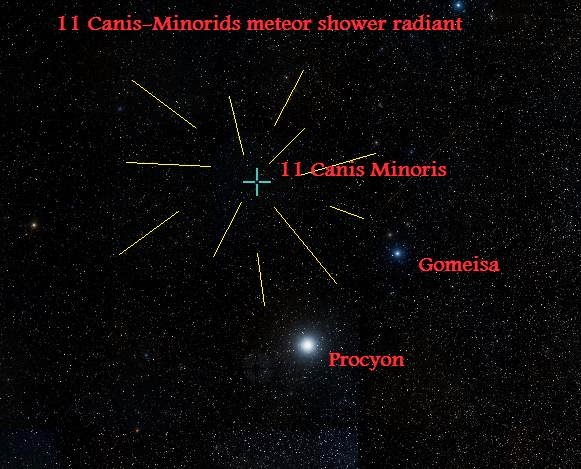
Meteor Shower Related to Canis Minor
The Canis-Minorids are also called Beta Canis Minorids. This meteor shower has its origin in the Canis Minor constellation, near one of its stars called 11 Canis Minoris. They are usually seen in the month of December.
Canis Minor in Other Cultures
Different cultures in ancient times have their own interpretation of the Little Dog in the celestial sky. Specifically, its brightest star Procyon was important to the traditions of the Aborigines of Australia and the Maori people of New Zealand.
Below are some other influences.
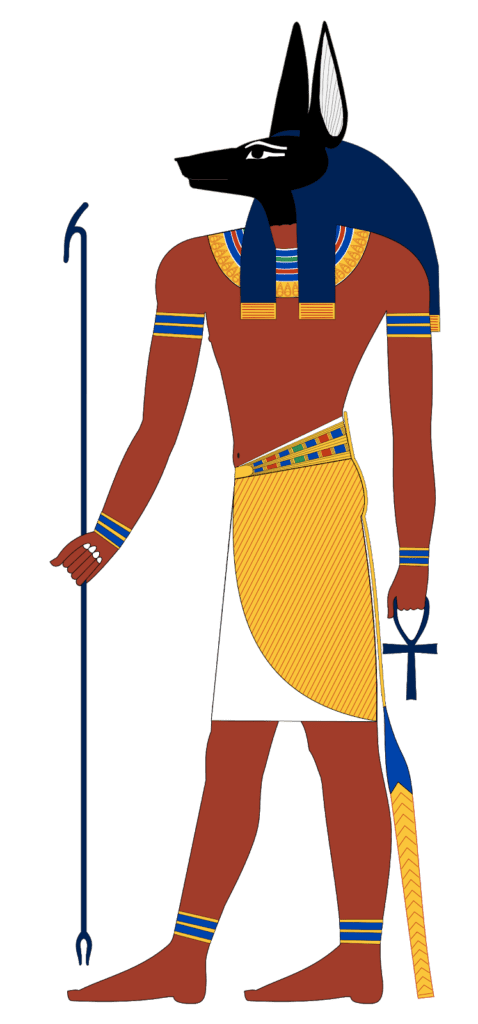
Egyptians
It was believed that Canis Minor represented Anubis, the ancient god of the dead of the Egyptians. He is also called Anpu. The head of this Egyptian god is a jackal, an animal closely related to dogs.
Aztecs
The Aztecs made great observations of the celestial sky. These observations affect their daily lives because it tells them when to plant and harvest their crops. To them, the stars of Canis Minor, Orion, and Gemini form an asterism which they call “Water”. They associated it with the day. We can see an Aztec calendar below:
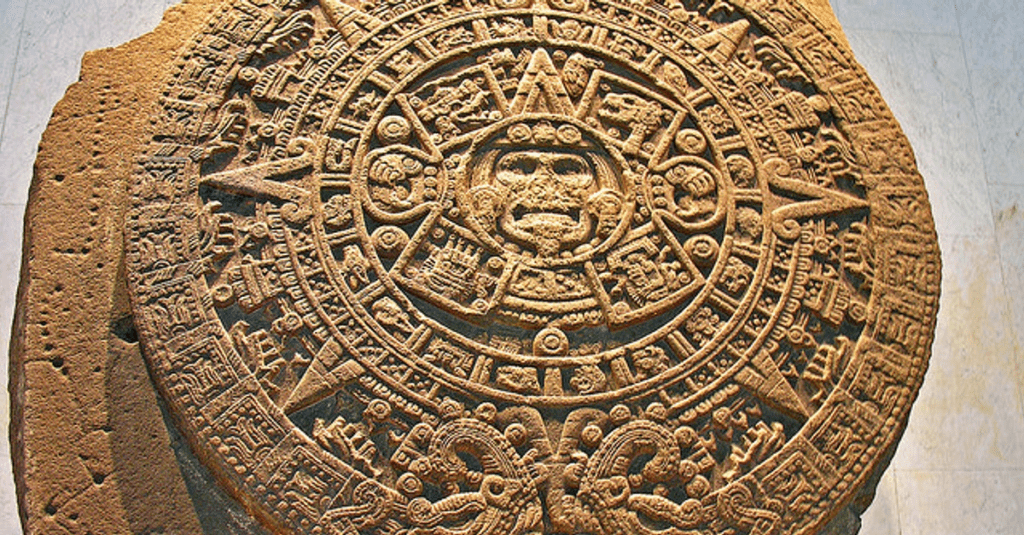
Mythology Related to Canis Minor Constellation
The Lesser Dog has influenced many cultures around the world. Because of this, it became a part of their mythology.
Greek Mythology
Canis Minor was associated with the sycamore tree. The tree was also mentioned in the story of Pyramus and Thisbe. Here are other stories relating to the Lesser Dog:
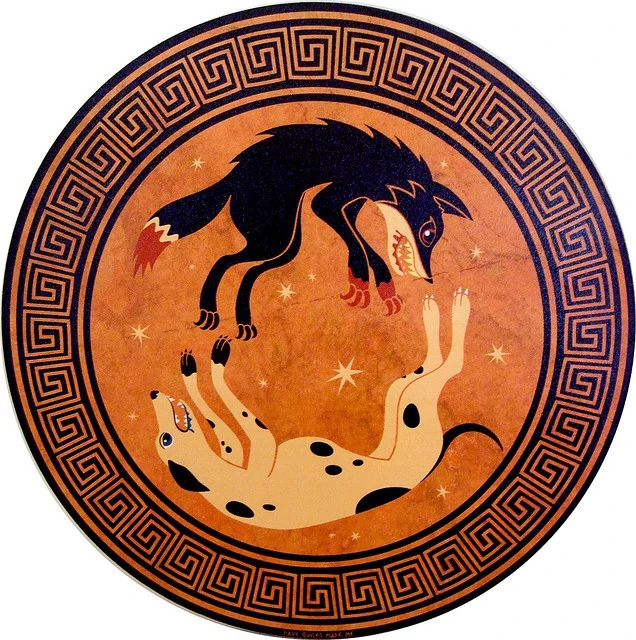
The Teumessian Fox
The Teumessian Fox never gets caught. It always escapes whatever is hunting it. There was a time when a dog called Laelaps was sent to catch it. The thing is, Laelaps is a creature that always catches whatever it hunts! Seeing that the chase between the two would go on forever, Zeus turned the two into stone and put them in the sky. The Teumessian Fox became Canis Minor and Laelaps became Canis Major.
Even in the winter night sky of today, the chase goes on because Canis Minor rises an hour earlier than Canis Major.
Maera the Hound
The Latin author Gaius Julius Hyginus has linked Canis Minor with Maera in the story of Icarius.
Icarius was skilled at making wine because he was a follower of the god of wine Dionysus. His daughter Erigone had a dog named Maera.
While travelling, Icarius gave wine to some shepherds. Unfortunately, the shepherds died. The others thought that Icarius poisoned the dead shepherds so they killed him.
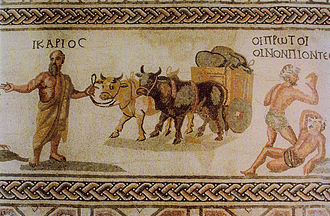
Erigone became worried about her father so she set off hoping to find him. She brought her dog Maera with her. The dog led her to the grave of her father. They both became very sad that Erigone hanged herself and Maera jumped off a cliff.
When Dionysus heard about this, he became very angry. He brought plagues to Athens which only stopped when the Athenians offered rites for Icarius and Erigone.
In remembrance of the three that died, Dionysus put them in the sky. Erigone became Virgo, Icarius became the constellation of Boötes, and Maera became the brightest star in Canis Minor, Procyon.
Roman Mythology
The story of Orion and his dogs originated from the Greeks, but it included only one dog. In the Roman version, it became two. It was Eratosthenes who related the Little Dog with Orion.
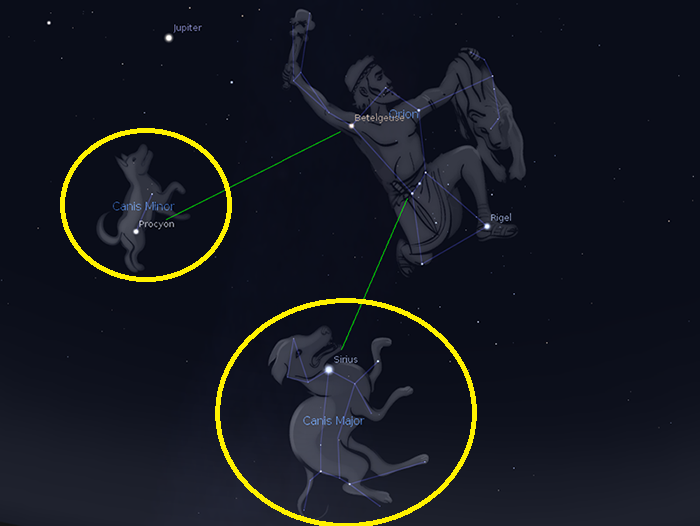
Orion and His Dogs
Orion was a hunter who always had his dogs with him. He was very great at hunting that he vowed to kill all animals on Earth. This made the goddess of earth, Gaia, very angry. Because of this, she asked a giant scorpion called Scorpio to kill the hunter before he harmed every animal on Earth. Scorpio has killed Orion. This made Artemis, his lover, very sad. When Zeus saw his daughter crying, he placed him in the sky together with his two loyal hunting dogs. These dogs are now Canis Minor and Canis Major.
Arabic Mythology
Arabian astronomers referred to Canis Minor as Al Jummaiza, meaning “sycamine tree.” Some others thought that it could be Al Ghumaisa, a similar-sounding word. The story goes like this:
Al Shi’ra (Sirius) and Elgomaisa (Procyon) were sisters. Their brother Suhail (Canopus) is married to Al Jauzah (Orion)*.
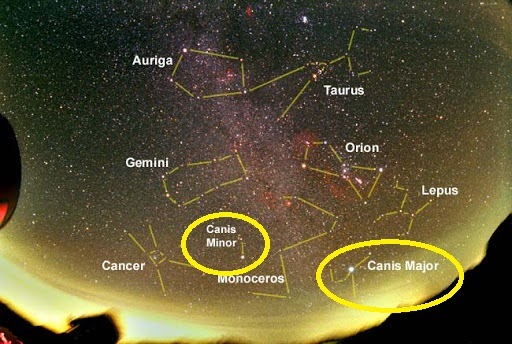
The two sisters wanted to follow their brother Suhail (Canopus) across the sky. They set off on a journey. When they were in the great Sky River (the Milky Way), the older sister, Al Shi’ra (Sirius), managed to cross the river but the younger sister did not. She was weeping on the northern bank of the great river, thus, the name Elgomaisa (Procyon).
Elgomaisa (Procyon) was from the word Al Ghumaisa which means “Watery-eyed” or “Weeping One.”
*Note: Al Jauzah (Orion) is a feminine name in Arabic.